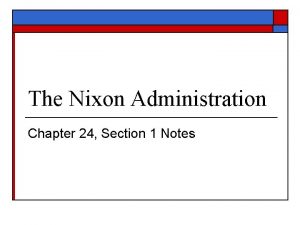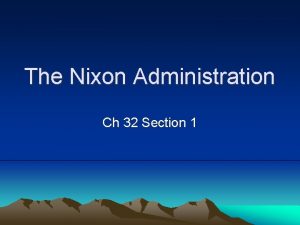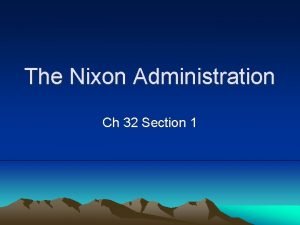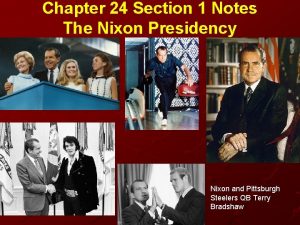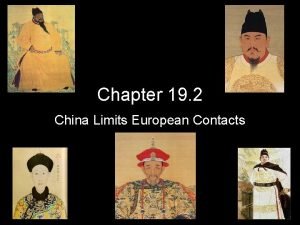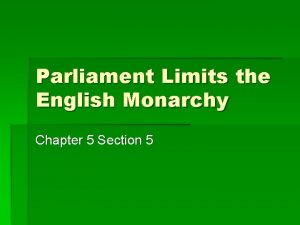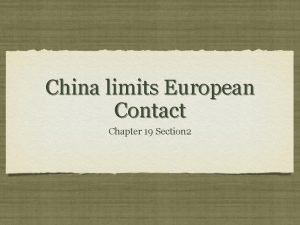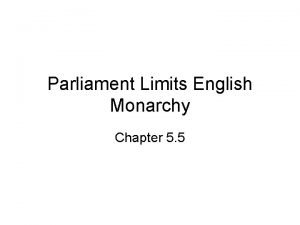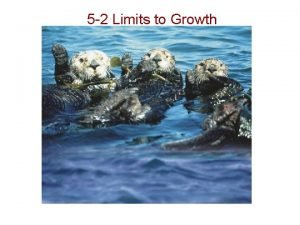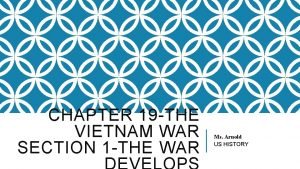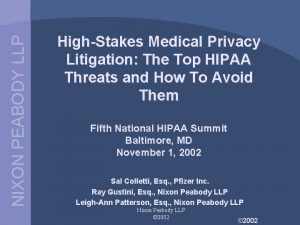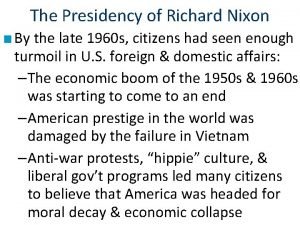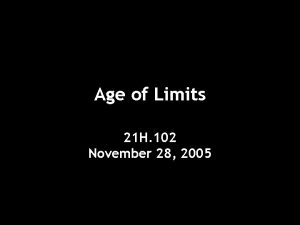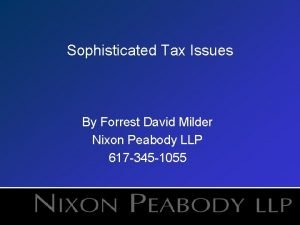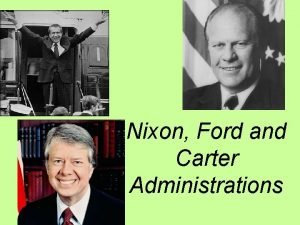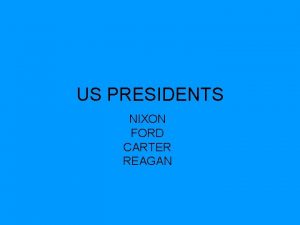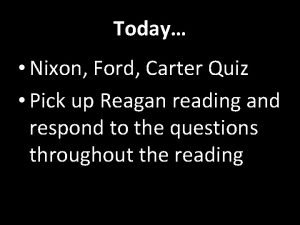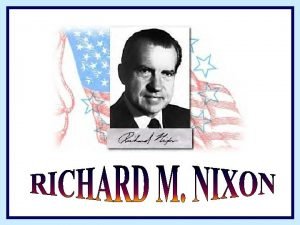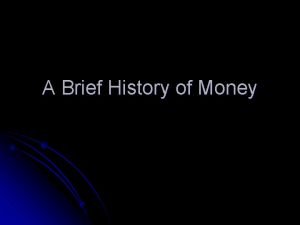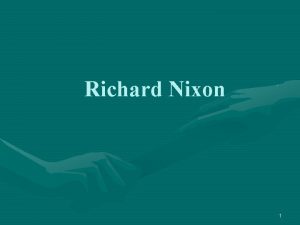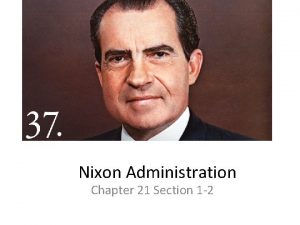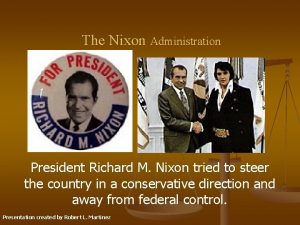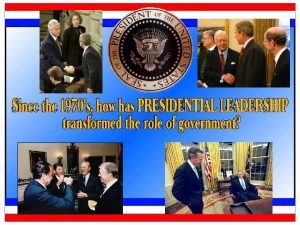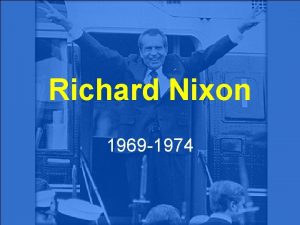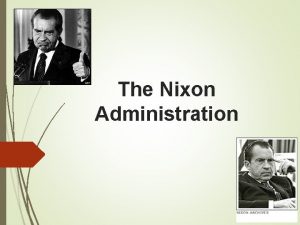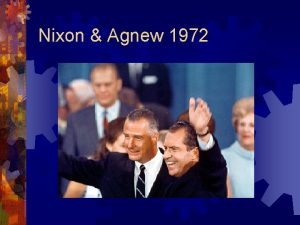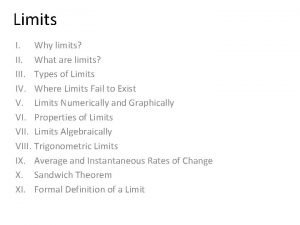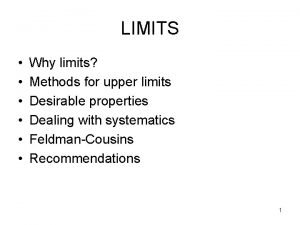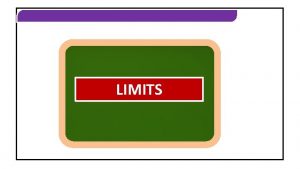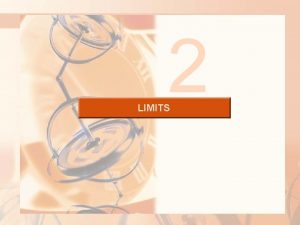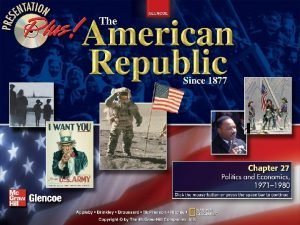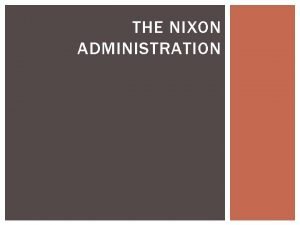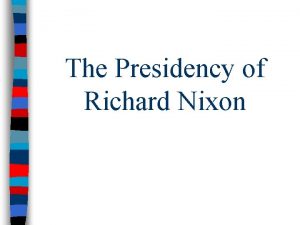The Nixon Administration Ch 32 Section 1 Limits






























- Slides: 30

The Nixon Administration Ch 32 Section 1

Limits on Gov’t. Power • Nixon plans to turn America in a conservative direction. • He wanted to bring order to a divided nation

New Federalism • Nixon wants to decrease the size of the federal government. • Under LBJ’s Great Society, gov’t took on much responsibility • Nixon wanted to distribute more of this power to state and local governments

Revenue Sharing • State and local gov’ts get more freedom for how to spend federal money

Family Assistance Plan (FAP) • Plan to give a family of 4 federal payments (must prove work towards employment) • Defeated by both Republicans and Democrats

2 faces of New Federalism • Nixon cut funding and abolished the Office of Economic Opportunity • At the same time he increased funding for Social Security, Medicare, and Medicaid

Law and Order Politics • Nixon wanted to end the Vietnam War and mend divisiveness in U. S. • Nixon sometimes engaged in illegal activities to combat enemies • Spiro Agnew assists

“Silent Majority”

Spiro Agnew • Resigned October 1973 • Bribes from MD contractors as governor and VP

25 th Amendment • Invoked by Congress to replace Agnew • 12 term Michigan Congressman – Gerald Ford

Nixon’s Southern Strategy • Nixon focused on 1972 election • He tried to attract Southern conservative Democrats by appealing to their unhappiness with federal desegregation policies and a liberal Supreme Court

Southern Strategy (continued) • Nominated 2 conservatives for SC – rejected – Clement Haynsworth – G. Harold Carswell

Democrats 1972 • • • George Mc. Govern – 25. 34% Hubert Humphrey – 25. 77% George Wallace – 23. 48% Edmund Muskie – 11. 51% Henry Jackson – 3. 16% Shirley Chisholm – 2. 69%

George Mc. Govern • Liberal, antiwar, antiestablishment • From S. Dakota • Running Mate – Thomas Eagleton of Missouri – Dropped due to electroshock treatment for depression

Nixon wins because: • Foreign policy successes in China and USSR • George Wallace assassination • Mc. Govern’s liberalism/ dropping Eagleton


New South • South had become a Democrat stronghold since Reconstruction • Many Southerners started to think that Dems. were becoming too liberal.

Nixon slows integration • Nixon slowed integration of public school to attract white voters in the South

Busing • Swann v. Charlotte. Mecklenberg Board of Education (1971) – school districts may bus students to end all-white or all-black schools

Nixon appoints new Supreme Court Justices • Nixon used 4 appointees to put a more conservative face on the Supreme Court

Stagflation • Combined high unemployment and high inflation • Nixon’s “New Economic Policy” – Took US off gold standard – Ended Bretton Woods System

OPEC • Organization of Petroleum Exporting Countries • Cause gas prices to go up during the Yom Kippur War of 1973

Nixon’s Foreign Policy • Realpolitik – “political realism” – Paying attention to more powerful countries – Departure from Containment policy

War Powers Act • Passed over Nixon’s veto • Limited president’s ability to send troops overseas – 48 hour reporting period to Congress – Limited authorization for 60 days • Congress could extend for 30 days Part of “New Isolationism”

The Nixon Doctrine • Also known as the Guam Doctrine • US would continue to aid its allies in fight against communism – Weapons and money – Use their own ground forces – “nuclear umbrella” • Vietnamization

detente • A policy aimed at easing Cold War tensions

Ping Pong Diplomacy • US Ping Pong team invited • 20 year trade embargo ended

China • Nixon visits China in 1972


Soviet Union • Nixon is first U. S. president to visit Moscow • Nixon and Brezhnev sign the SALT I treaty (Strategic Arms Limitation Talks) • Limited # of ICBMs
 Chapter 24 section 1 the nixon administration answers
Chapter 24 section 1 the nixon administration answers Chapter 32 section 1 the nixon administration
Chapter 32 section 1 the nixon administration Chapter 32 section 1 the nixon administration
Chapter 32 section 1 the nixon administration Chapter 24 section 1 the nixon administration
Chapter 24 section 1 the nixon administration Limits involving infinity
Limits involving infinity Real limits vs. apparent limits
Real limits vs. apparent limits China limits european contacts
China limits european contacts Chapter 21 section 5 parliament limits the english monarchy
Chapter 21 section 5 parliament limits the english monarchy Chapter 19 section 2 china limits european contacts
Chapter 19 section 2 china limits european contacts Parliament limits the english monarchy chapter 5 section 5
Parliament limits the english monarchy chapter 5 section 5 When do density-dependent factors operate most strongly?
When do density-dependent factors operate most strongly? United states v nixon outcome
United states v nixon outcome Tricky dicky richard nixon
Tricky dicky richard nixon Nixon method of splenic percussion
Nixon method of splenic percussion Vanderbilt financial aid
Vanderbilt financial aid Chapter 19 the vietnam war
Chapter 19 the vietnam war Nixon peabody boston
Nixon peabody boston Jerry nixon microsoft
Jerry nixon microsoft Richard nixon
Richard nixon Dr jon nixon
Dr jon nixon Precox ascites
Precox ascites Vicki nixon
Vicki nixon Nixon china
Nixon china Nixon leaving white house
Nixon leaving white house David milder
David milder Regents of university of california v. bakke
Regents of university of california v. bakke Objetivos holísticos
Objetivos holísticos Nixon ford carter reagan
Nixon ford carter reagan 882
882 Nixon quaker religion
Nixon quaker religion Nixon tally stick download
Nixon tally stick download
